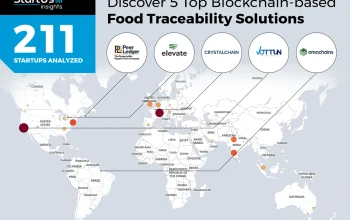For decades, we’ve been running our world on a “take-make-waste” treadmill. We extract resources, shape them into products, and then, well, we toss them. It’s a linear system, and frankly, it’s hitting its limits. The good news? A powerful alternative is gaining ground: the circular economy.
But here’s the deal—a circular economy isn’t just a fancy term for better recycling programs. It’s a complete philosophical shift. It’s about designing waste and pollution out of the system from the very beginning, keeping products and materials in use for as long as humanly possible, and regenerating natural systems.
And for businesses, this isn’t just a feel-good side project. It’s the blueprint for a resilient, innovative, and honestly, more profitable future. Let’s dive into the sustainable business models that are making the circular economy a tangible reality.
From Line to Loop: The Core Philosophy
Think of the linear economy as a straight, one-way street. Resources cruise down it and vanish over a cliff. The circular economy, in contrast, is more like a bustling roundabout. Everything and everyone keeps moving, but nothing ever really leaves. Value is continuously recaptured and regenerated.
This requires a fundamental redesign of how we create value. It moves us away from the model of selling as much stuff as possible to a model of providing the best service and experience possible, with the least physical footprint. It’s a different kind of growth.
Five Game-Changing Circular Business Models
So, what does this look like in practice? Well, companies are getting creative. Here are five powerful models that are redefining industries.
1. The Circular Supply Chain Model
This one starts at the very source. Instead of relying on virgin, finite resources, companies use renewable, recyclable, or biodegradable materials. It’s about closing the loop right at the input stage.
A great example is the footwear company Allbirds. They’ve built their entire brand around sustainable materials like merino wool, tree fiber, and even sugarcane-based foam for their soles. They’re not just making shoes; they’re building a supply chain that regenerates rather than depletes.
2. Resource Recovery & Upcycling
This model finds value where others see trash. It’s about creating systems to recover and repurpose waste materials, turning them into new, high-quality products. You know, true alchemy.
Consider the food and beverage industry. Companies like Coffee Barrels upcycle used coffee grounds from cafes into natural, aromatic soaps and candles. They’re tackling a waste stream and creating a unique product line simultaneously. It’s a win-win that’s hard to ignore.
3. The Product-as-a-Service (PaaS) Model
This might be the most disruptive model of all. Instead of selling a product outright, companies retain ownership and lease access to it. Think “subscription” for physical goods. This completely changes the incentive structure.
Why? Because if you, the manufacturer, are responsible for the product’s entire lifecycle, you have a massive incentive to make it durable, repairable, and ultimately, recyclable. Philips’ “Light-as-a-Service” is a classic case. Businesses pay for the light they use, while Philips provides, maintains, and upgrades the lighting fixtures. They get a steady revenue stream, and the customer gets a hassle-free, always-up-to-date service.
PaaS in Action: A Quick Comparison
| Traditional Model | Product-as-a-Service Model |
| Customer buys a washing machine. | Customer subscribes to a “Wash-as-a-Service” plan. |
| Manufacturer’s goal: Sell more units. | Manufacturer’s goal: Maximize machine lifespan and efficiency. |
| Broken machine becomes customer’s problem. | Manufacturer repairs or replaces it promptly. |
| End-of-life: Machine often ends up in landfill. | End-of-life: Manufacturer refurbishes or harvests parts for a new unit. |
4. Sharing Platforms
This model maximizes the utilization of products that would otherwise sit idle. We’re all familiar with the giants like Airbnb and Uber, but this concept is exploding into B2B and niche markets.
Platforms like Fat Llama allow people to rent out everything from cameras and power tools to drones and musical instruments. It reduces the need for every single person to own their own low-use items, which means fewer resources are consumed overall. It’s community-driven efficiency.
5. Product Life-Extension
In a world of planned obsolescence, this model is a rebel. It’s about designing products to last and then providing the services—repair, refurbishment, resale—to keep them in circulation for years, even decades, longer.
Patagonia is the undisputed champion here. Their Worn Wear program isn’t a sideline; it’s a core part of their brand identity. They actively encourage customers to repair their gear, trade it in, or buy used. They’ve built a loyal community by selling less, but building more value and trust. It’s a powerful testament to the business case for longevity.
Making the Shift: It’s Not Always Easy
Okay, so the models are compelling. But transitioning isn’t a simple flip of a switch. Businesses face real hurdles.
First, there’s the upfront cost. Redesigning products and re-engineering supply chains requires significant investment. Then there’s the consumer mindset. We’re conditioned to value “new.” Convincing customers to lease a product or buy refurbished requires a shift in marketing and education.
And let’s not forget the reverse logistics. Creating a system to take back used products is a complex operational challenge that most linear businesses have never had to consider.
The Future is Circular (And It’s Already Here)
Despite the challenges, the momentum is undeniable. The circular economy addresses so many of our current pain points: resource scarcity, supply chain instability, and of course, environmental degradation. It’s not a niche trend for eco-brands; it’s becoming a strategic imperative for any business that wants to thrive in the 21st century.
It’s a move from being a miner of resources to a manager of flows. It’s about creating an economy that works, long-term, because it works with our planet’s systems, not against them. The question is no longer if business will adopt these models, but how quickly they can adapt. The most successful companies of tomorrow are the ones designing their circular future today.





